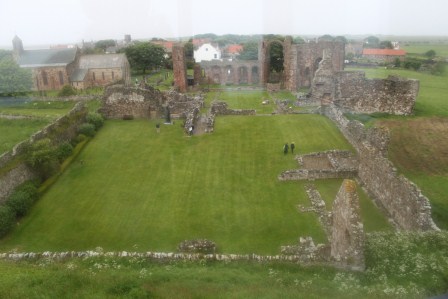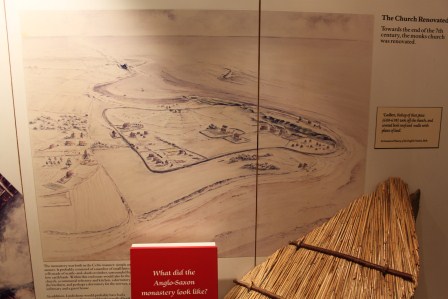Re-posted from Archaeodeath.
Recently, for the first time in my adult life, I had the opportunity to visit the premier medieval site of Lindisfarne. This is a site of key historic and archaeological importance for understanding the Anglo-Saxon church, its origins, development and diversity. It was here that Aidan established the earliest Christian monastic foundation in the kingdom of Northumbria. His founder status was superseded to a large extent by the cult of St Cuthbert, but forgotten he was not. Lindisfarne is also famous for being subject to one of the earliest, and certainly the most famous of Norse raids, in AD 793. Following a decline (or abandonment) of the site during the tenth century, the Benedictine priory was a focus of monastic life and pilgrimage to the cenotaph of Cuthbert’s original grave and to St Cuthbert’s Isle – the site of his hermit’s cell – through the Middle Ages. The monastery survived until Henry VIII’s suppression of the monasteries.
I couldn’t stay long on the island, but I can only enthuse about the striking landscape and seascape, appreciable even from a short visit. The first thing to note is the striking topography of the island itself, joined as it is by a tidal causeway to the mainland. Dunes constitute much of the north of the island, leaving a relatively small and protected area of habitable ground. The Anglo-Saxon monastery was located beside a natural harbour on the sheltered southern shore.


